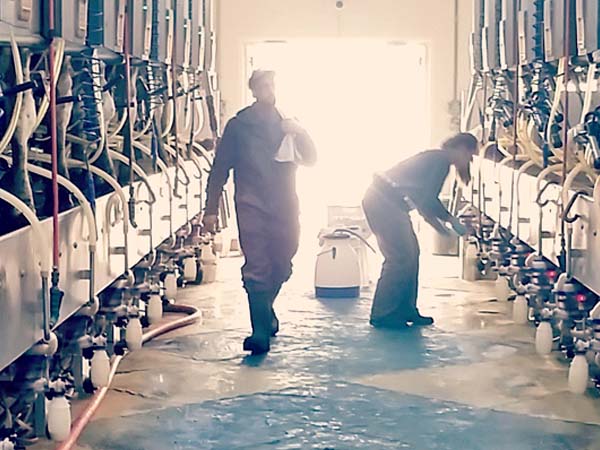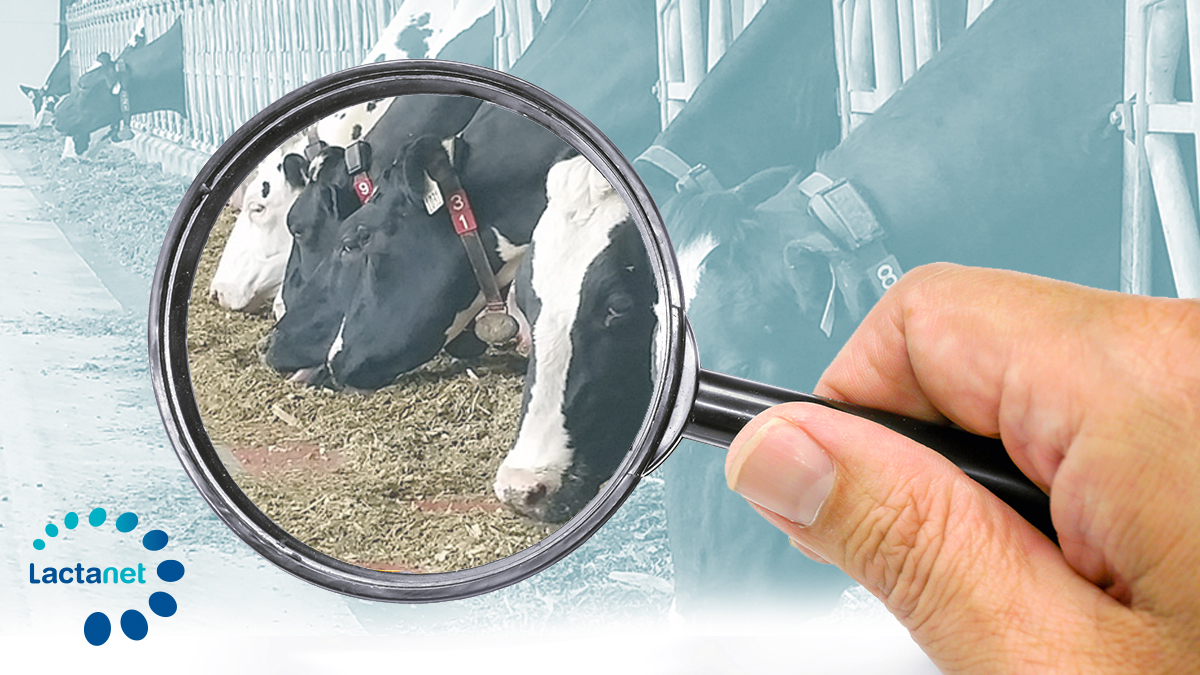Artificial intelligence: Fact or fiction?
- March 18, 2021
- Le Producteur de Lait Québécois Magazine
Who hasn’t heard all the talk about artificial intelligence (AI) in the past year? Although it began being developed as early as World War II, it seemed more like science fiction until recently. But AI has made its way into our lives and our barns for years now. What benefits could it have for the agricultural world?

IA on dairy farms
Numerous companies are working to develop advanced algorithms, especially for sensors and cameras. For example, heat detection can be supported by AI. Voice recognition via mobile devices is used to capture information in barns, while facial recognition using a mobile camera is used for cow identification. Lameness analysis and assessment of animal body weight and body condition using a camera is now possible, and all thanks to research in the field of AI.
The power of IA
In the heat of the moment, it’s not always easy to know what to do or what protocol to apply. It takes time to do some research or call an advisor. This is where AI can flex its muscles: helping determine the right actions to take based on information collected from multiple sources. AI can also consider past actions that have had a beneficial impact. These kinds of algorithms will be coming out over the next few years, and this is the direction that agriculture and other economic sectors are going to take.
Looking for data in a haystack
Dairy farmers invest heavily in services or equipment that produce a large volume of data. Twenty years ago, we said that the amount of data available to help with decision-making was increasing rapidly and that support tools were needed to wade through all this information. And we hadn’t seen anything yet! The number of data points per cow has continued to grow significantly. It’s hard to put an exact figure on it, but that number has likely multiplied by a factor of 1,000 to over 10,000 in 20 years. On its own, infrared analysis of a milk recording sample produces over 1,000 data points, which in turn are used to produce a detailed profile of the components of that sample: total fat and specific fatty acids, protein, urea, BHB, etc. A milking robot provides several types of data with each milking, sometimes more than five times a day for a cow in early lactation, and for each teat. You can now collect data from activity monitors on an ongoing basis, on the milk tank every other day, on health, etc. In short, this means a lot of data to sift through to properly manage your production and your business!
A word of caution!
However, to maximize the benefits, the data must be enhanced and transformed into useful and relevant information to guide the decisions you make on a daily basis. This requires interpreting it properly by filtering and analyzing multiple figures, tables and graphs. You have to determine what needs special attention and what requires action, like a sudden drop in your de novo fatty acids. Maybe a broken scraper means you won’t have time to check? Knowing that a problem exists and being able to find it in this massive amount of information: that is the challenge! That’s where AI comes in, because it can partially replace a human being in digesting this information. AI should do most of the analysis work and get you thinking, not about all your data, but about where you should pay special attention. AI could even help prevent a problematic situation before it arises thanks to its predictive capabilities. The field of AI is now advanced enough to do that.
AI: Artificial or augmented intelligence?
You could be more philosophical and ask what artificial intelligence really is. Can an algorithm really be intelligent? No matter the answer, this field has grown so rapidly in the past 10 years that we can see the possibility of significantly increasing the intelligence of algorithms. The importance web giants such as Google, Amazon, Facebook and Apple (GAFA) in our lives and that of large multinationals that have developed thanks to AI, such as Uber and Airbnb, certainly gives us a glimpse into the potential of AI for agriculture. In multiple sectors, such as mechanics, aeronautics and healthcare, there are more and more interconnected AI-based tools to provide additional contextualized information through specialized screens, phones or headsets. Personal assistants, like Alexa and Siri, are becoming smarter and more useful in our daily lives. This type of technology makes it possible to provide support with increased intelligence, which could, in this decade, revolutionize our lives.
The true benefits of AI: at work!
Once something abnormal or in need of special attention has been identified, you still need to decide what to do to correct the situation. The sensor tells you a cow is in heat based on her activity level. You use this information and, naturally, take into account any other data available to you when deciding whether or not to inseminate her. But AI could give you more information, or even make a recommendation, by pairing the cow’s activity data with an assessment of her metabolic status derived from the infrared spectrum collected during her last milk recording, taking into account the room temperature in recent days. This additional information could help predict the cow’s fertility at this precise moment and possibly support a decision to delay insemination. What if the algorithm also considered the profit that the cow has the potential to generate based on her genetic background and history, but also in relation to the future profitability of the other females in the herd? You might decide not to inseminate this cow.
This decision-making process is similar to that of any good herd manager. AI facilitates the process, which is becoming increasingly overwhelming for farmers to manage as herd sizes increase. In addition, it allows you to use the maximum amount of information available to make the best possible decision.
AI: A must
AI is therefore a must that will have an increasing impact on our lives and in our barns. The intelligent algorithms that emerge will be developed from the data generated at farms. And, in general, it’s the farmers who pay for the equipment or services that generate this data. Obviously, developing algorithms is complex and expensive, and their use will not be free. We need to strike the right balance now and prevent farmers from finding themselves at the mercy of a handful of large, dominant AI companies. That’s why now is the time for the dairy industry to take an interest and invest in AI to reap the benefits. This is important so that farmers can collectively maintain a certain autonomy in managing their businesses.
If we have to ask the question: “Who owns my data?” we should also be asking: “Who owns the algorithm developed using my data?” Not to mention the issues of ethics and inclusion that could also be raised.

This series of articles is part of a project on digital transformation funded by the Programme de développement sectoriel, under the Canadian Agricultural Partnership, an agreement between the governments of Canada and Quebec.
By Abdoulaye Baniré Diallo, research professor at the Laboratoire d’Algèbre, de Combinatoire et d’Informatique Mathématique (LACIM) at UQAM as well as co-founder and scientific director of My Intelligent Machines (MIMs).













